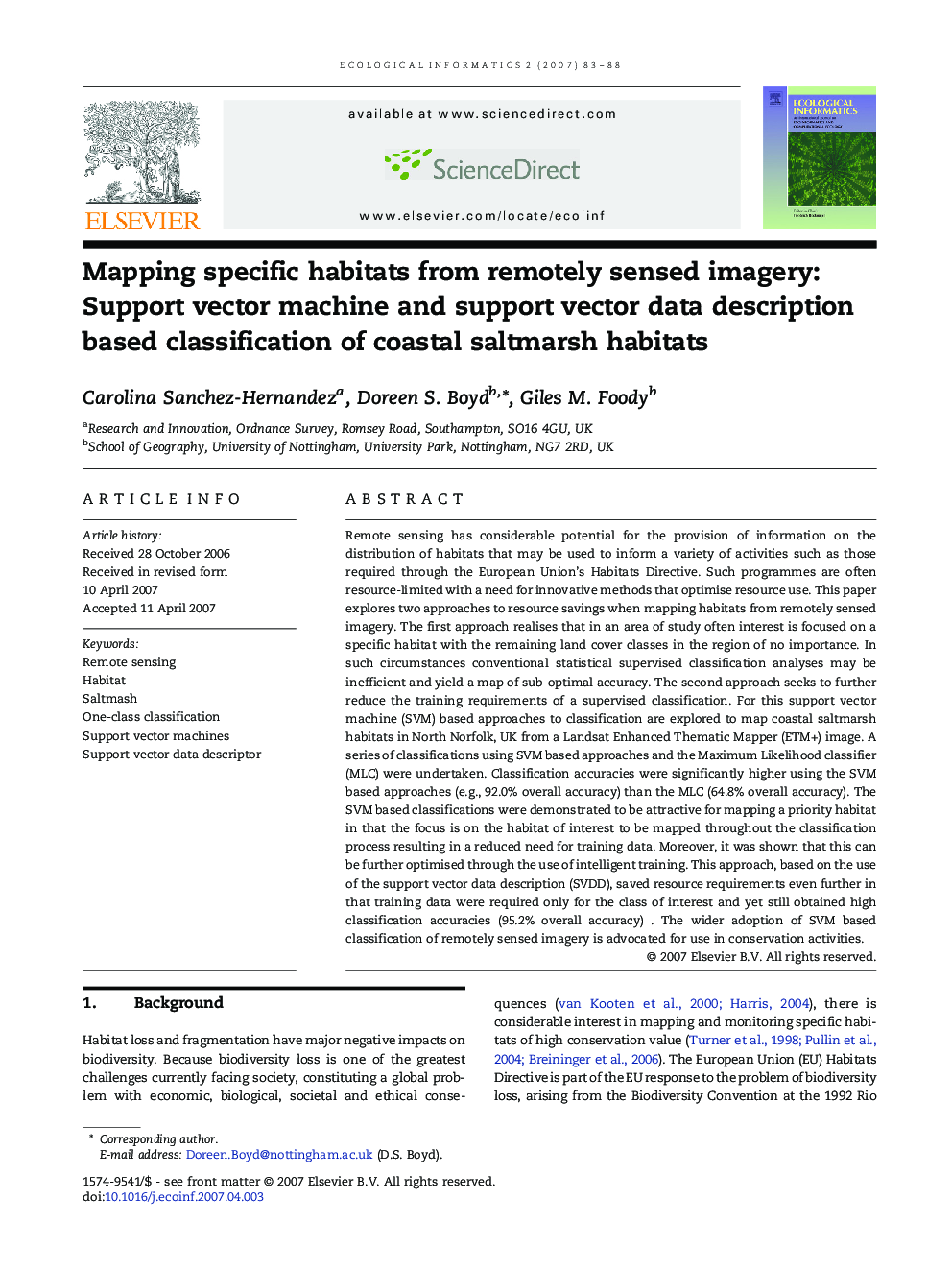| Article ID | Journal | Published Year | Pages | File Type |
|---|---|---|---|---|
| 4375420 | Ecological Informatics | 2007 | 6 Pages |
Remote sensing has considerable potential for the provision of information on the distribution of habitats that may be used to inform a variety of activities such as those required through the European Union's Habitats Directive. Such programmes are often resource-limited with a need for innovative methods that optimise resource use. This paper explores two approaches to resource savings when mapping habitats from remotely sensed imagery. The first approach realises that in an area of study often interest is focused on a specific habitat with the remaining land cover classes in the region of no importance. In such circumstances conventional statistical supervised classification analyses may be inefficient and yield a map of sub-optimal accuracy. The second approach seeks to further reduce the training requirements of a supervised classification. For this support vector machine (SVM) based approaches to classification are explored to map coastal saltmarsh habitats in North Norfolk, UK from a Landsat Enhanced Thematic Mapper (ETM+) image. A series of classifications using SVM based approaches and the Maximum Likelihood classifier (MLC) were undertaken. Classification accuracies were significantly higher using the SVM based approaches (e.g., 92.0% overall accuracy) than the MLC (64.8% overall accuracy). The SVM based classifications were demonstrated to be attractive for mapping a priority habitat in that the focus is on the habitat of interest to be mapped throughout the classification process resulting in a reduced need for training data. Moreover, it was shown that this can be further optimised through the use of intelligent training. This approach, based on the use of the support vector data description (SVDD), saved resource requirements even further in that training data were required only for the class of interest and yet still obtained high classification accuracies (95.2% overall accuracy) . The wider adoption of SVM based classification of remotely sensed imagery is advocated for use in conservation activities.
